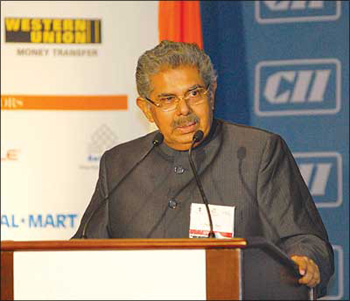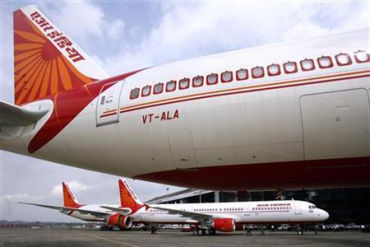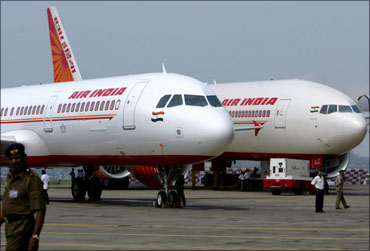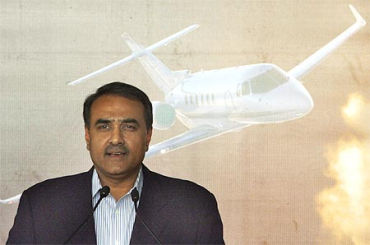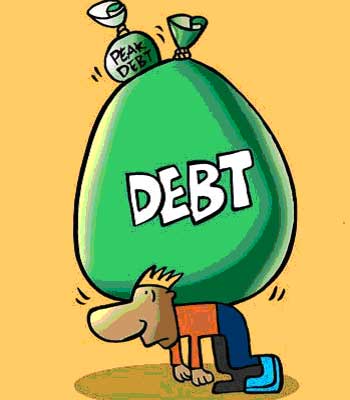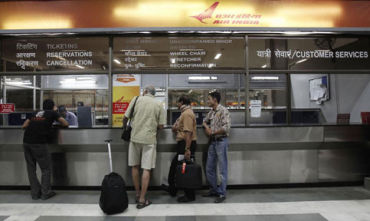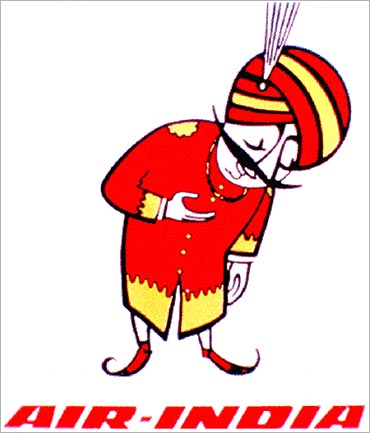 | « Back to article | Print this article |
Is the government killing Air India?
The recently-ended strike by the airline's pilots - among the most pampered employees in the country, who are oblivious of the fact that their company is in acute danger of drowning in debt - is just another outrage.
Virtually every layer of governance has contributed to the mess and the pilots became brazen because they knew the airline would continue to be rescued by vested interests.
Irresponsible trade unionism should have prompted Civil Aviation Minister Vayalar Ravi to threaten a lockout.
Click NEXT to read more...
Is the government killing Air India?
And he is rapidly turning out to be the minister for Air India, considering his intervention in the nitty-gritty of the organisation, which leaves little room for the management to manage.
The worst affected is, of course, subsidiary Air India Express, which is strong on Kerala-based Gulf traffic and whose head office has been shifted to Kerala by the minister from Kerala so that it can be at arm's length - literally.
Click NEXT to read more...
Is the government killing Air India?
But this is not high enough. The airline gets short shrift right from the top - the president and prime minister.
For decades, it disrupted its schedules by taking out from regular service an aircraft every time a VVIP went on an official trip, configured it for VVIP duty and then reconfigured it for regular duty once the VVIP was back.
Many wondered why the government could not have its own planes for VVIPs so that Air India's already notoriously-maintained schedules were not made worse.
Click NEXT to read more...
Is the government killing Air India?
Even more recently, it sent a proposal to the ministry suggesting the government pay Rs. 800 crore (Rs. 8 billion) a year towards the overall cost of those aircraft.
It is not as though the pilots don't have a point.
Air India and Indian Airlines were merged half a decade ago but a common cadre for pilots is still absent.
Compensation disparities between the two streams remain, with the domestic stream legitimately feeling that it is treated as the poor cousin.
Click NEXT to read more...
Is the government killing Air India?
The reign of Praful Patel, under whose watch the merger took place, was also marked by the Indian Airlines brand being kicked around like a football - first being rebranded and then entirely subsumed under the Air India brand.
This hardly uplifted the morale of the domestic carrier's employees.
Click NEXT to read more...
Is the government killing Air India?
Potentially profitable routes were given up for private sector players to turn around and run successfully.
Of course, Air India was poorly managed but the minister and the management under him were only too ready to give up rather than turn things around.
Perhaps the biggest blow to the two airlines came from an act that was meant to revive them.
For decades, the two airlines were impaired by aging aircraft when rising fuel prices made young fuel-efficient fleets essential for survival.
Click NEXT to read more...
Is the government killing Air India?
Then, when fleet renewal took place under Patel's stewardship, the new fleets were far bigger than the airlines could manage.
No matching business plan was ready or even feasible. To keep itself alive, Air India has had to keep borrowing.
As a result, the debt-equity ratio has reached a crazy 20:1 and the annual interest burden an astronomical Rs. 2,600 crore (Rs. 26 billion).
Click NEXT to read more...
Is the government killing Air India?
To the sins of all others must be added those of the employees.
Over time they have come to be among the best paid, most undisciplined and least productive.
Air India has around 240 employees for every aircraft, against the benchmark of 120.
Its aircraft are in the air for around nine hours a day, against competitors' 11, and its passenger load factor is under 70 per cent, when others hit nearly 80 per cent.
Click NEXT to read more...
Is the government killing Air India?
Indian Airlines has seen three fine leaders - P C Lal, Mohan Kumaramanagalam and S S Ramdas.
In the past decade, it has been headed by IAS officers on deputation in contrast to some of the most successful public sector organisations like NTPC, BHEL, SAIL and SBI which are being headed by professionals, mostly from within.
It is axiomatic that national organisations should develop their own ethos and cadres, no matter how good civil servants may be.
After Ravi came in, three senior professionals, including the COO, were made to exit.
The rest is tragic history, which continues to unfold.

